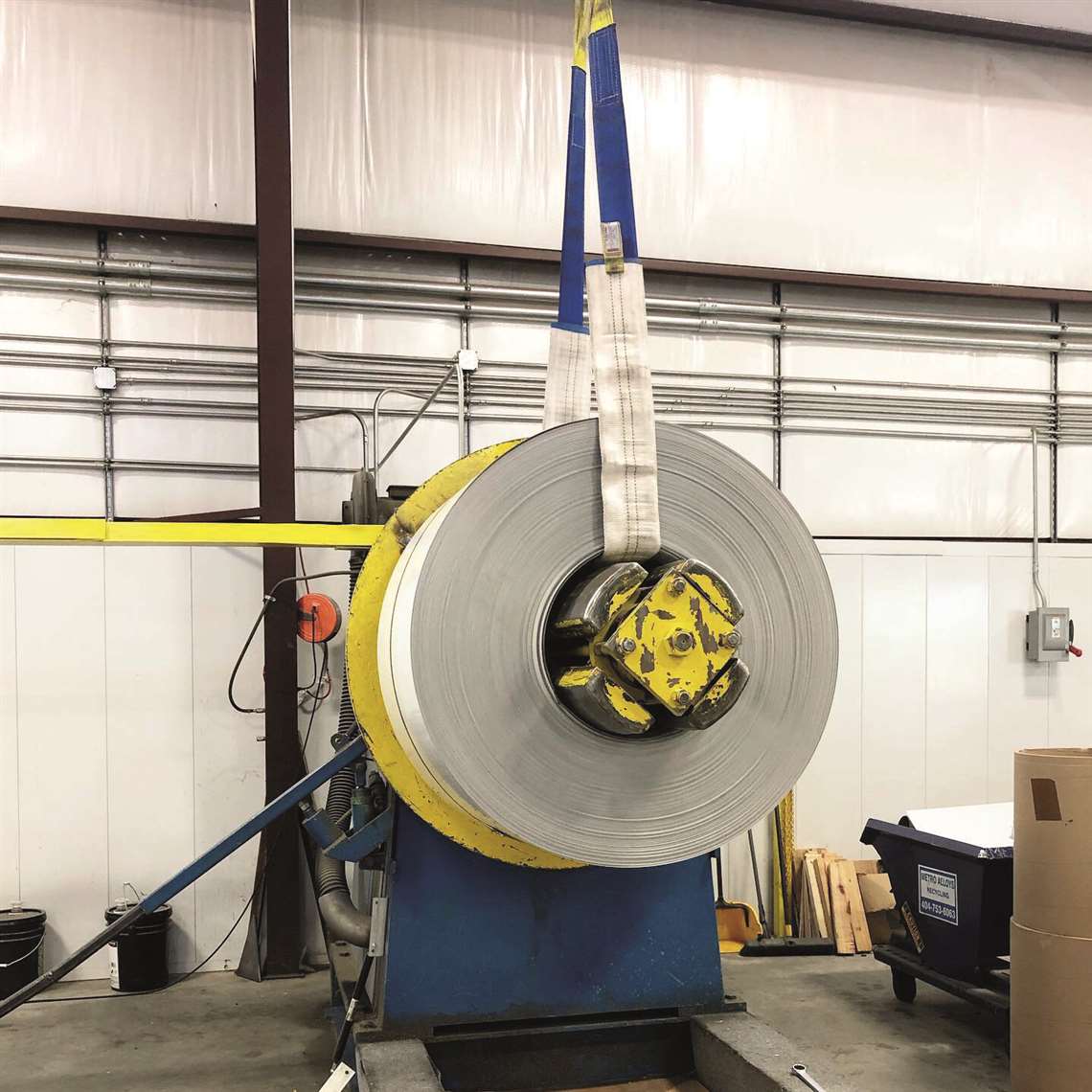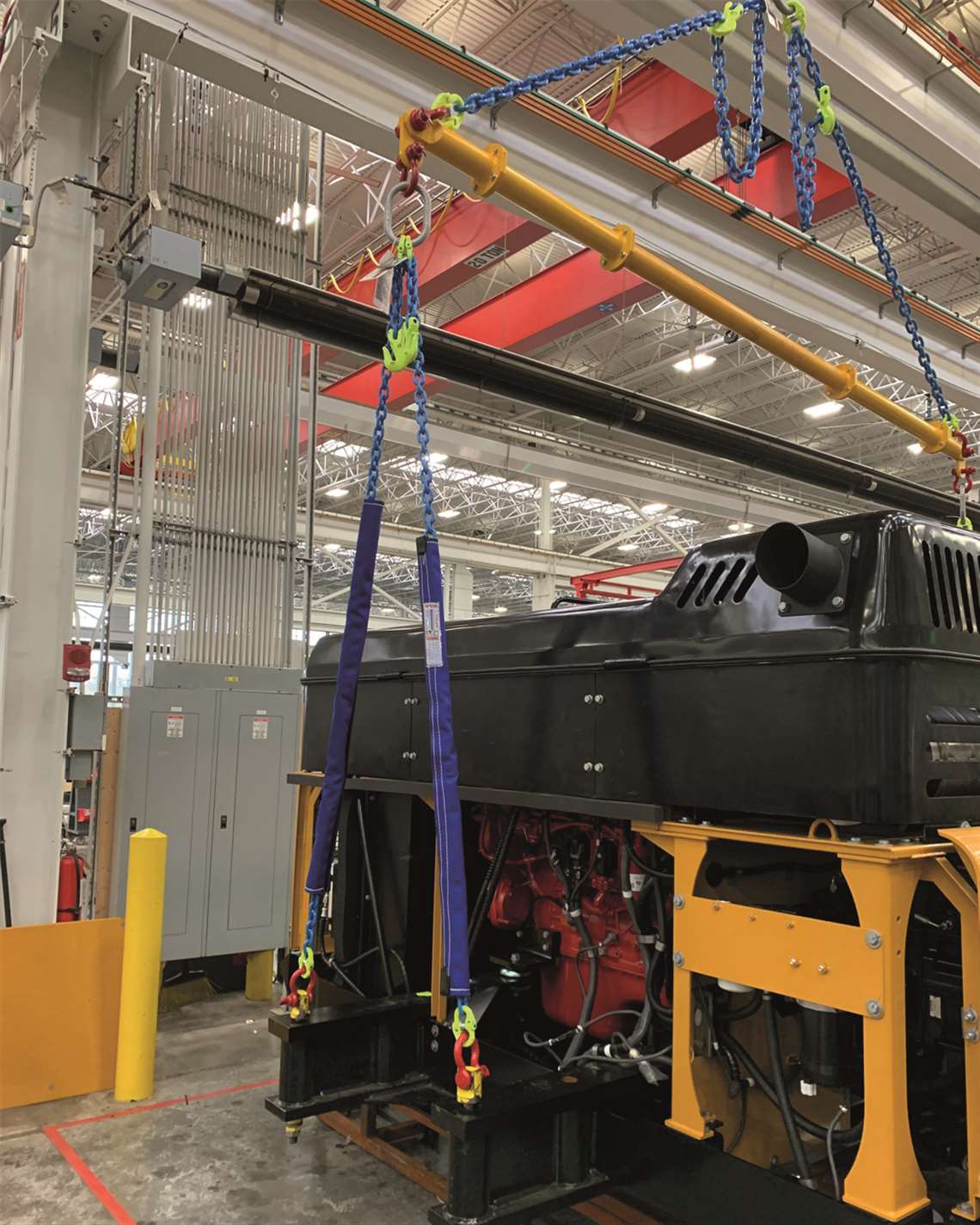Sling protection rises in popularity
15 April 2021
Sam Socolow discusses the importance of sling protection.
Sling protection has proven to be essential. What originated as a method to protect slings from cutting, has grown into an important generation of rigging products. Sling protection has risen in popularity because when riggers decide to use sling protection, they are protecting more than just their rigging – they are protecting their overall investment in their project.
 TUFF-ASH Sling Armor was used daily on a lift for metal coils. There was no sign of damage after a year of use.
TUFF-ASH Sling Armor was used daily on a lift for metal coils. There was no sign of damage after a year of use.
Damaged slings being used beyond their working load limit is the number one cause of sling failure. For synthetic slings, the number one cause of sling failure is cutting. Before sling protection products, riggers would get creative to protect their slings from edges and abrasions. In the field, you could find gloves, carpet, books and other risky and unsafe items being used to protect slings. This, of course, is not recommended.
OSHA states that “slings shall be padded or protected from the sharp edges of their loads.” While OSHA recommends using sling protection, what riggers consider “sharp” is subjective. The Web Sling & Tie Down Association says that the “sling must always be protected from being cut or damaged by corners, edges, protrusions or abrasive surfaces with protection sufficient for the intended purpose.” It is better to add sling protection to any possible abrasive surface or edge than to risk damage to the sling or the safety of riggers. It is equally as important to choose trustworthy, quality-tested sling protection products.
Ashley Sling noticed a gap in available sling protection products and began seeking solutions to the rising hazard of damaged slings. For that reason, we developed our TUFF-ASH Sling Protection product line with options for almost every lifting need. However, there is not a one-size-fits-all for sling protection. It is important to carefully select all sling protection products based on the type and weight of the load to be lifted. Additionally, the size, shape and type of material, as well as proper alignment are critical for the sling protection to perform properly. When chosen properly, sling protection products work to prevent damage to the sling, protect the load, aid to longer sling life and to keep riggers safe.
Preventing damage
One goal of sling protection products is to prevent cuts, abrasions and other types of damage to the sling. Riggers can help prevent cutting and abrasion by adding protective sleeves, body wraps and edge wraps where the load may experience abrasion or come in contact with an edge. There are also options to add protection to the eyes of the sling.
 A Quick-Attach-style sling protection sleeve was added to a lift to protect the load from cosmetic damage.
A Quick-Attach-style sling protection sleeve was added to a lift to protect the load from cosmetic damage.
While no product is cut-proof, it’s getting pretty close. TUFF-ASH Sling Armor is a lightweight sleeve made from Dyneema tubing. The sleeve provides cut resistance that is unprecedented.
In one experience, a customer used Sling Armor on web slings that lifted metal coils daily for one year. Upon inspection, there was no sign of damage, and they were able to remain in use. Sling protection helped prevent cutting and extended the life of a heavily used sling.
Sling protection can help assure longer sling life. Sling protection sleeves or pads help the sling remain in acceptable working condition for longer periods of time. Safety experts prefer that the sling protection sleeve become damaged before the sling itself. It is much safer to replace a sling protection sleeve than it is to wait until a load-bearing sling becomes damaged. Keep in mind, a sling must be removed from service any time it is damaged. The initial investment may be more when you add sling protection, but the savings add up in the long run.
While it is important to protect the slings, it is equally as important to protect the load you are lifting. Some loads are expensive or delicate and require more attention during the lift. For example, we had a customer use slings to move parts of an excavator for assembly. In situations such as these, it is important that the load does not receive cosmetic damages, while also maintaining a safe and efficient assembly process. With the right type of sling protection, the customer was able to achieve lift safety and prevent damage to the delicate load.
Worker protection
Without sling protection, riggers are more at risk for personal injury or even death. To reiterate, the number one cause of sling failure is using damaged slings beyond their working load limit. Cutting is the number one cause of failure for synthetic slings. For this reason, it is important to understand the information on the product identification tag and properly inspect your rigging. Riggers should always inspect sling protection products and other rigging before, during and after every lift. By conducting regular rigging inspections and adding sling protection, riggers can do their part to prevent sling failure.
Sling protection has evolved into sophisticated products that are necessary for all lifting projects. By using sling protection, riggers are protecting the sling, the load, their employees and overall investment. With a simple solution available to resolve potential dangers, it only makes sense to make sling protection a priority.
STAY CONNECTED


Receive the information you need when you need it through our world-leading magazines, newsletters and daily briefings.



